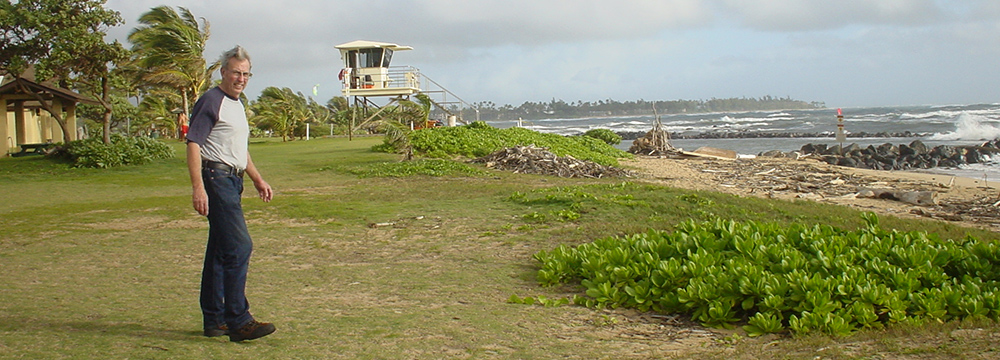Chapter 37 from Kent’s Memoirs of a Jesus Freak
Another spiritual leader also had many people fooled about the
real nature of his group besides David Berg and the Children of
God. It has been argued long and hard about which was more
damaging to the Jesus People Movement. My opinion is that the COG
caused the most damage, since the Jones’ business collapsed so completely
and was so utterly discredited, any trouble instigated by them
disappeared rather quickly. And it must be made clear, despite confusion
to the contrary—Jim Jones and The People’s Temple had absolutely
no connection with the JPM.
Jim Jones did not impact my ministry in Marin County until
1972, the year Church of the Open Door was established. We were
a non-denominational, charismatic church built on the ministry
foundation several of us had established in Marin’s towns. I became
aware of Jones from articles in the San Francisco Chronicle, since he
had involved himself in San Francisco politics, a very strange creature
during that period.
Jones began sending buses to our parking lot at Carpenter’s Hall
in San Rafael on Sunday mornings, in order to transport anyone wanting
to come to his services in San Francisco instead of ours. This tactic
revealed Jones’ arrogant and aggressive nature. At first, I did nothing
to stop this tactic, but after hearing reports of what was taking place
at the meetings, I decided to visit The People’s Temple myself and
attended at least two of their services.1
1 I later climbed on board the bus when it pulled into the parking lot and
literally threatened the driver with bodily harm if he ever showed up again. No bus
ever came back, and I am thankful for that to this day, without apology.
What I recount now may seem rather strange; however, many
other people witnessed what I experienced, and over an extended
period of time. Here is what happened: (1) Angel’s wings (or so it was
said) brushed over me; (2) My up-stretched hand was clasped as in
a handshake that could be felt but not seen; (3) I smelled a pleasant
aroma, which Jim Jones called “the sweet savor of the Lord,” wafting
through the air; and (4) Drops of oil fell on my Bible held open on my
lap. In addition, there was a young black girl from Oakland, maybe
aged thirteen, who stood in front of the congregation while the “stigmata”
appeared on her hands and ankles—the places where the
Roman soldiers pounded the nails into Jesus’ body—and blood, or so
it seemed, soaked through her dress at the point where the spear of
the Roman soldier pierced Jesus’ side.
After this I understood the attraction; there was a powerful
presence in Jim Jones’ meetings. Despite the spiritual nature of the
meetings, and the enthusiasm, the clapping, dancing, and exuberant
singing, I heard no gospel preached or Bible taught. Oddly, it was also
not the kind of service I would describe as either Pentecostal or charismatic.
After my visits to the People’s Temple, I addressed the San Rafael
Church and made it very clear that it was the devil at work in Jones’
services and definitely not the Spirit of God. The miracles, I declared,
were counterfeit, however real, and the whole purpose was to deceive
and confuse the faithful. I warned as sternly as I could that no one
should attend his services.
When the Jonestown tragedy in Guiana became known to the
world, and for some months after that, I officiated at funerals for some
of those who died at Jonestown. It was then that I was able to make
sense and be certain of what had happened: there was at work at The
People’s Temple the same force at work with David Moses Berg and
COG—a demonic power able to seduce and deceive through counterfeit
signs and wonders. I had felt that same power on the morning
when Ed Sweeney had to pull me away from being drawn into the
COG while listening to a member’s pitch. It was that same pull I had
experienced during the Kirtans at the Hare Krishna temple in 1967.
Now I had seen it at work at The People’s Temple.
A Failure to Discern
I learned a lesson: not all that is spiritual is of the Spirit of God.
Due to the charismatic orientation embraced by most of the Jesus
People, we were not able to grasp this. This failure was likely the
most damaging aspect of the JPM, contributing to its dark side. We
simply did not know that prophecy, healings, and miracles could be
of a devilish origin. I am still working through aspects of this in my
current spiritual walk. I don’t want to assign all signs and wonders to
the nether regions, because I think that during times of awakening,
there are exceptional Holy Spirit gifts given that authentically result
in glory to God. Let me be clear, however, that none of what I experienced
during the Hindu services, or encountered with the young
man on the porch of the former French Embassy in Atlanta, or saw
firsthand at the People’s Temple in San Francisco had anything to do
with the Spirit of God.
